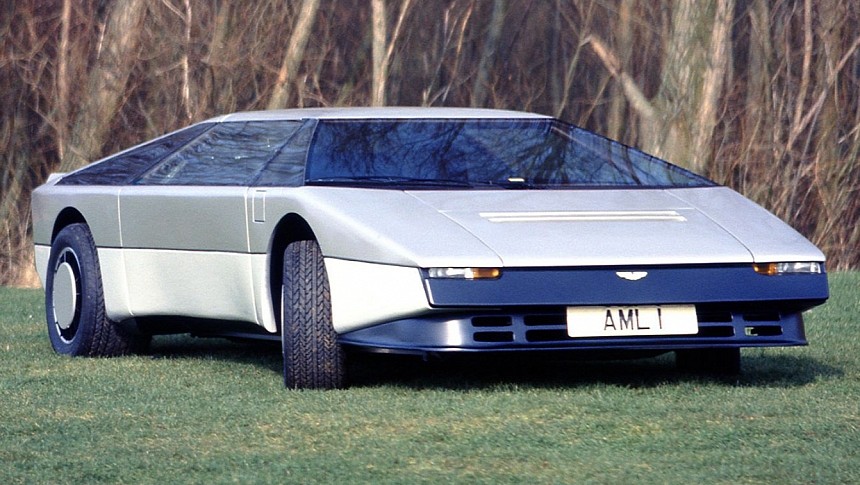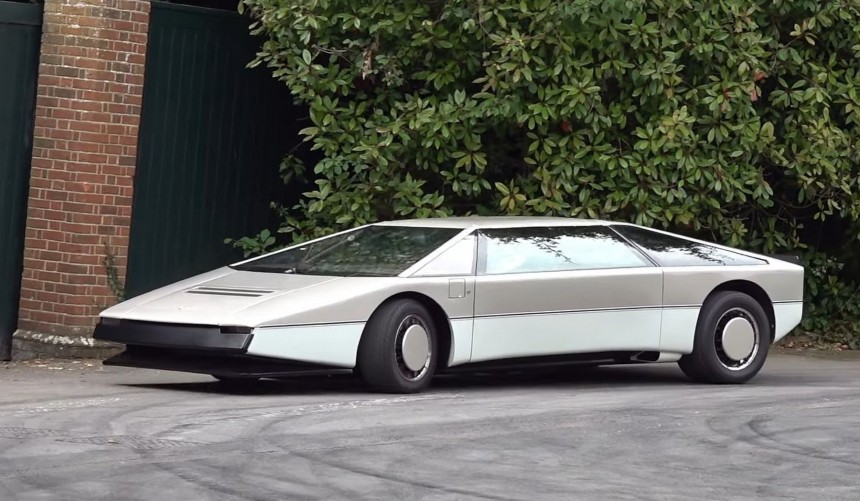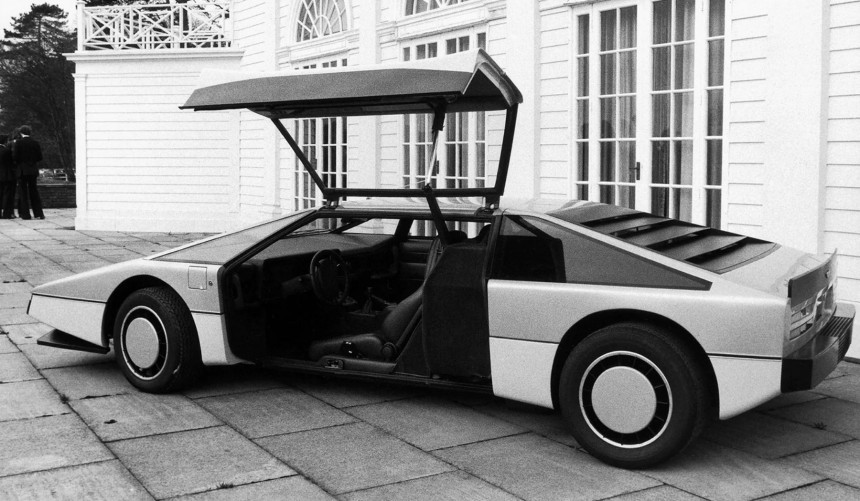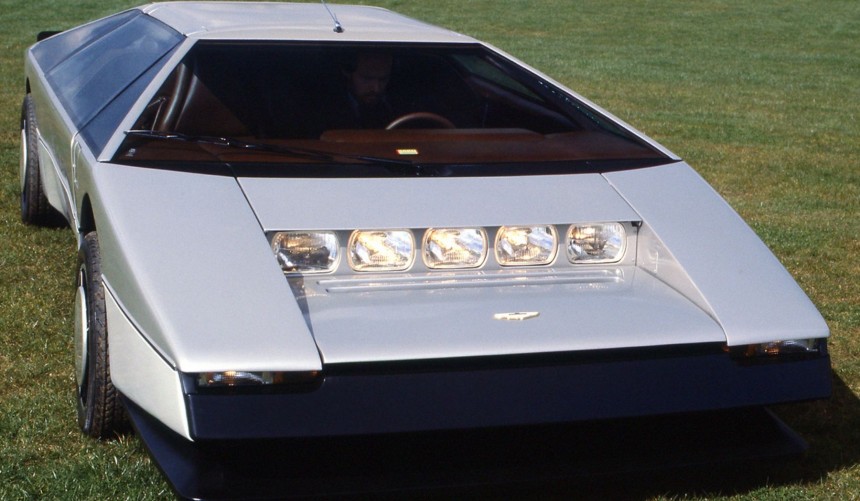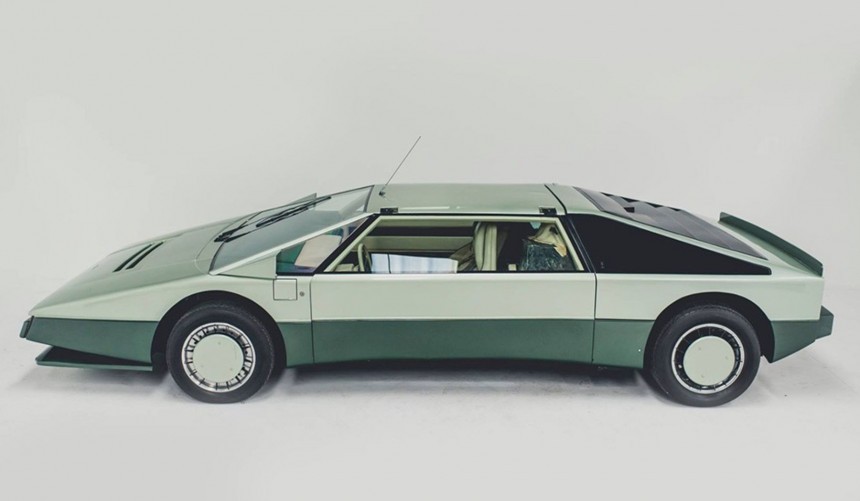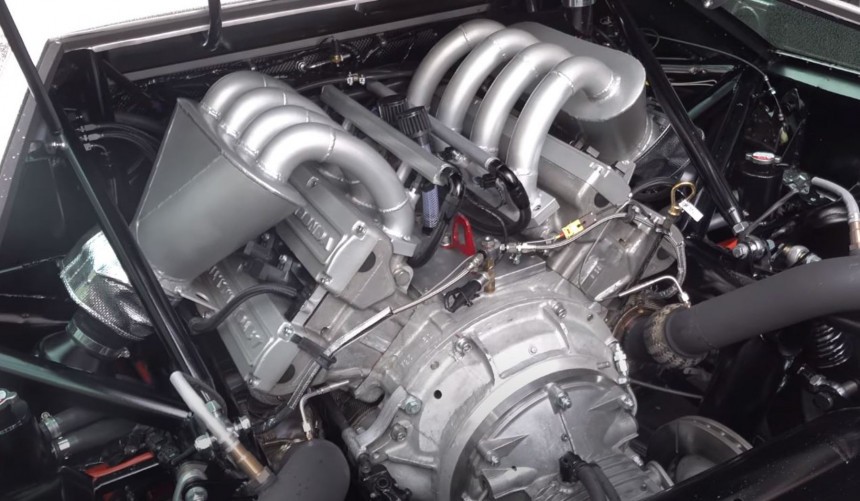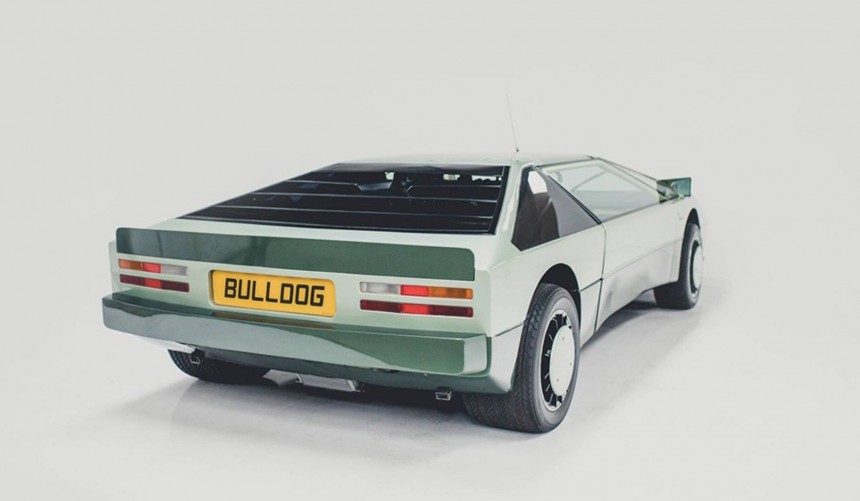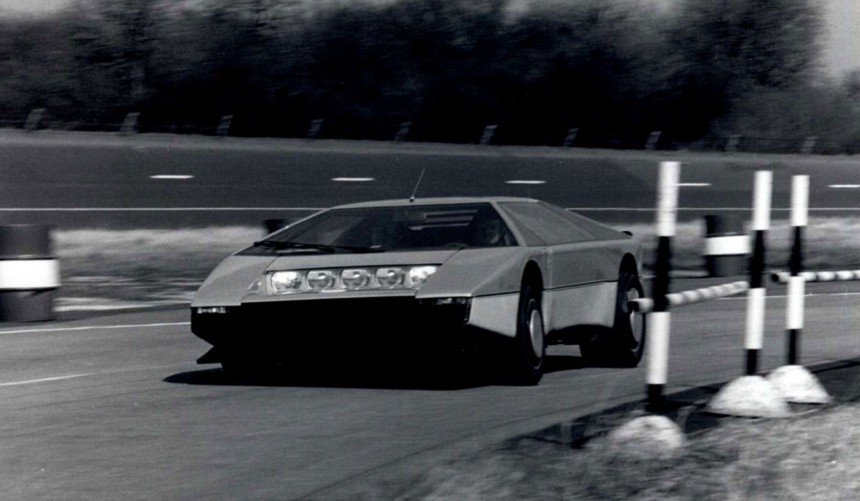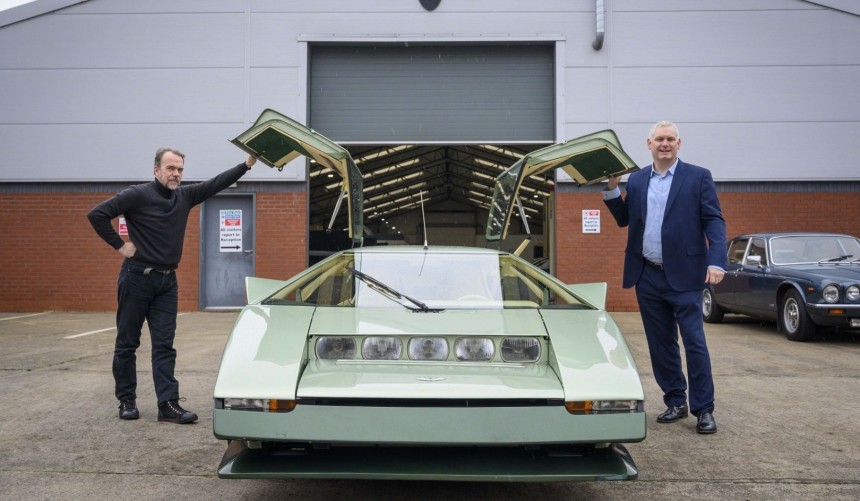Though it might look simple and outdated today, the Aston Martin Bulldog was a groundbreaking high-performance sports car nearly half a century ago, and if it weren't for a shift in the company's focus, it would've become the fastest production car in the world.
Founded in 1913 by Lionel Martin and Robert Bamford, Aston Martin had its ups and downs during the following century.
Nevertheless, it's now one of the world's most renowned manufacturers of luxury sports cars and grand tourers.
The British company based in Gaydon, Warwickshire, is also a legendary name in the world of motorsports.
These days, it's involved in Formula 1 and the FIA World Endurance Championship.
Also, it's set to return to Le Mans next year (2025), aiming to win at the world's most famous 24-hour race once again after crossing the finish line first in 1959 with Roy Salvadori and Carroll Shelby sharing driving duties.
As far as production cars go, Aston Martin continues to produce some of the world's finest 2+2 grand tourers, as well as one of the craziest road-legal hypercars: the Valkyrie.
While the Valkyrie is currently the most groundbreaking production car that ever donned Aston Martin badges, back in the 1970s, the British carmaker developed another sports car meant to have a similar effect.
The year was 1976, and Aston was facing financial uncertainty. To revitalize its lineup and bring in some much-needed funds, the carmaker broke its 2+2 grand tourer tradition by introducing a potent, high-tech luxury sedan.
Unveiled at the London Motor Show in October, the Lagonda Series 2 wasn't the first four-door Aston model, but unlike the previous (unsuccessful) attempts, it was an all-new, wedge-shaped design developed from the ground up as a legitimate sedan.
But Aston Martin's outside-the-box thinking didn't end with the new Lagonda, as boss Alan Curtis instructed William Towns (the designer behind the new sedan) to develop a cutting-edge, high-performance sports car that could potentially become the world's fastest production car.
Shortly after the Lagonda was revealed, Towns got to work and produced a series of sketches. Since he firmly believed that wedge shapes were the wave of the future, his design featured almost no curves.
In the first months of 1977, a team led by Towns and engineering director Mike Loasby gathered in a small workshop set up at Cranfield airfield, close to Aston Martin's new Newport Pagnell
engineering facility, where they began work on the ambitious project.
Nicknamed K9 after the robot-dog in the Doctor Who TV series, the project didn't progress too far, as Loasby left Aston for De Lorean, and management diverted funds to the production phase of the new Lagonda.
Therefore, after the team managed to build parts of the chassis and several body panels, the project was abandoned.
But, thankfully, that wasn't the end of the fascinating car's story.
About two years later, as the Lagonda's production was well underway and attracting funds, Alan Curtis decided to revive the K9 project.
With a 12-month target to finish the car, William Towns was instructed to get back at it, and 29-year-old development engineer Keith Martin joined him to complete Loasby's original chassis.
Making up for the lack of experience with talent and determination, Martin and six other engineering rookies finished the tubular steel frame.
Then, they equipped the structure with a double wishbone suspension at the front, a conventional de Dion axle at the rear, and a potent braking system with four-piston calipers that hugged massive 292.1-mm (11.5-inch) rotors behind each wheel.
In the meantime, Towns worked on completing the aluminum bodywork and interior.
In the fall of 1979, the famed stylist and his team finished the bodywork and interior. With the chassis and powertrain also completed, the car was almost ready for its maiden test run.
The 1970s were a decade when the wedge-shaped design ruled the automotive world since it provided significant aerodynamic advantages, and, as I mentioned earlier, Town was a big fan of this trend.
Therefore, with the exception of the wheel wells, the car's low-drag body featured no curves.
Almost sixteen feet (4.87 m) long, well over six feet (1.82 m) wide, and only about four feet (1.2 m) tall, the car was an imposing presence that looked like it broke out of the base of Giza's Great Pyramid.
It received a series of features that were both eye-catching and high-tech, such as huge, gullwing-opening doors electrically actuated by a mechanism initially developed for the V8 Volante's power hood.
Additionally, the concept had five headlights (three for the low and two for the high beams) arranged in a central slot on the hood and hidden by an electronically retractable panel.
Another innovative feature was the bladed wheel design that drew in air to cool off the brakes and improved overall aerodynamics.
Besides the chassis, Keith Martin and his engineering team also worked on the powertrain.
It incorporated a mid-mounted 5.3-liter Aston Martin V8 and a ZF five-speed transaxle similar to the unit used on the De Tomaso Pantera.
But since the project aimed to build one of the fastest cars in the world, the V8, which made a little over 300 hp in its most potent, street-legal form, underwent a forced induction treatment.
With extensive modifications and a Garrett T04B snail for each bank of cylinders, the 5.3-liter was now capable of delivering well over 700 hp on the test back, but for increased reliability, it was limited to 650 horses.
Though it was one of the first applications of twin-turbocharging on a V8 engine, the unit ran remarkably well.
After subsequent road tests, engineers reported short power delivery with minimal turbo lag - which was unheard of in those early days of turbocharging.
Officially called Bulldog after a light aircraft that Alan Curtis loved to fly during his spare time, the car made its first test run in November 1979.
After a series of tweaks and touch-ups, it made its public debut at the Bell Hotel in Aston Clinton in March 1980.
With its spaceship-like wedge-shaped body and a lavish interior that featured two gargantuan leather-wrapped seats, a roof-mounted console, as well as LCD instrumentation borrowed from the Series 2 Lagonda, the Bulldog became an instant hit.
Although a concept that showcased Aston Martin's capabilities, the car was remarkably well-built and equipped, so the press began speculating that it might become a production model.
Indeed, Curtis was considering a small production run of about 25 units. Consequently, he instructed the team to continue development and scheduled a series of tests.
After extensive wind tunnel tests that resulted in the addition of a chin spoiler to reduce lift, the team concluded that the car could theoretically go past the 237 mph (381kph) mark.
They set out to prove that at the MIRA (Motor Industry Research Association) test track, where the Bulldog attained 192 mph (309 kph) before running out of track.
The team reasoned that the car could achieve at least 200 mph (322 kph) on a longer straight - a speed that no production car had attained until that point, so they planned to take it to Ehra-Lessien, the VW test track where Bugattis would break speed records decades later.
Unfortunately, the test scheduled for 1981 was never conducted, and any plans for a production run were abandoned when Victor Gauntlett became Aston's new chairman.
With the company in financial trouble again, the K9 project was shelved, and the resulting Bulldog was eventually sold to Saudi prince Muhammed bin Saud.
In the following decades, the car switched owners several, undergoing cosmetic modifications that saw its body repainted green and its interior reupholstered with a brighter shade of tan leather.
In 2020, the now-forgotten Bulldog was purchased by Philip Sarofim, a wealthy collector of wedge-shaped oddities who decided to bring the car back to the UK and restore it to its former glory.
The experts at Classic Motor Cars Ltd received the honor of restoring the Bulldog, a task that lasted over a year. The team completely disassembled the car, restored every nut and bolt, and even strengthened the chassis in key areas.
Last year (2023), the revived Bulldog finally accomplished the goal it had been waiting 43 years to achieve.
Driven by Aston Martin factory driver and three-time Le Mans class winner Darren Turner, the concept conceived in the late 1970s broke the 200 mph (322 kph) barrier and concluded one of the most fascinating stories in British automotive history with a happy ending.
Though it never made it into production and took more than four decades to achieve 200 mph (322 kph), the Bulldog remains one of the most intriguing cars that Aston Martin has ever built.
If you want to take a virtual tour of the timeless supercar and see it in action at the Goodwood Festival of Speed, we recommend watching the YouTube video below by 19Bozzy92.
Nevertheless, it's now one of the world's most renowned manufacturers of luxury sports cars and grand tourers.
The British company based in Gaydon, Warwickshire, is also a legendary name in the world of motorsports.
These days, it's involved in Formula 1 and the FIA World Endurance Championship.
Also, it's set to return to Le Mans next year (2025), aiming to win at the world's most famous 24-hour race once again after crossing the finish line first in 1959 with Roy Salvadori and Carroll Shelby sharing driving duties.
As far as production cars go, Aston Martin continues to produce some of the world's finest 2+2 grand tourers, as well as one of the craziest road-legal hypercars: the Valkyrie.
While the Valkyrie is currently the most groundbreaking production car that ever donned Aston Martin badges, back in the 1970s, the British carmaker developed another sports car meant to have a similar effect.
Thinking well outside the box
Unveiled at the London Motor Show in October, the Lagonda Series 2 wasn't the first four-door Aston model, but unlike the previous (unsuccessful) attempts, it was an all-new, wedge-shaped design developed from the ground up as a legitimate sedan.
But Aston Martin's outside-the-box thinking didn't end with the new Lagonda, as boss Alan Curtis instructed William Towns (the designer behind the new sedan) to develop a cutting-edge, high-performance sports car that could potentially become the world's fastest production car.
It almost didn't make it
In the first months of 1977, a team led by Towns and engineering director Mike Loasby gathered in a small workshop set up at Cranfield airfield, close to Aston Martin's new Newport Pagnell
engineering facility, where they began work on the ambitious project.
Nicknamed K9 after the robot-dog in the Doctor Who TV series, the project didn't progress too far, as Loasby left Aston for De Lorean, and management diverted funds to the production phase of the new Lagonda.
Therefore, after the team managed to build parts of the chassis and several body panels, the project was abandoned.
But, thankfully, that wasn't the end of the fascinating car's story.
The first revival
With a 12-month target to finish the car, William Towns was instructed to get back at it, and 29-year-old development engineer Keith Martin joined him to complete Loasby's original chassis.
Making up for the lack of experience with talent and determination, Martin and six other engineering rookies finished the tubular steel frame.
Then, they equipped the structure with a double wishbone suspension at the front, a conventional de Dion axle at the rear, and a potent braking system with four-piston calipers that hugged massive 292.1-mm (11.5-inch) rotors behind each wheel.
In the meantime, Towns worked on completing the aluminum bodywork and interior.
Wedge-shaped madness
The 1970s were a decade when the wedge-shaped design ruled the automotive world since it provided significant aerodynamic advantages, and, as I mentioned earlier, Town was a big fan of this trend.
Therefore, with the exception of the wheel wells, the car's low-drag body featured no curves.
Almost sixteen feet (4.87 m) long, well over six feet (1.82 m) wide, and only about four feet (1.2 m) tall, the car was an imposing presence that looked like it broke out of the base of Giza's Great Pyramid.
It received a series of features that were both eye-catching and high-tech, such as huge, gullwing-opening doors electrically actuated by a mechanism initially developed for the V8 Volante's power hood.
Additionally, the concept had five headlights (three for the low and two for the high beams) arranged in a central slot on the hood and hidden by an electronically retractable panel.
Another innovative feature was the bladed wheel design that drew in air to cool off the brakes and improved overall aerodynamics.
Twin-tubo V8 power
It incorporated a mid-mounted 5.3-liter Aston Martin V8 and a ZF five-speed transaxle similar to the unit used on the De Tomaso Pantera.
But since the project aimed to build one of the fastest cars in the world, the V8, which made a little over 300 hp in its most potent, street-legal form, underwent a forced induction treatment.
With extensive modifications and a Garrett T04B snail for each bank of cylinders, the 5.3-liter was now capable of delivering well over 700 hp on the test back, but for increased reliability, it was limited to 650 horses.
Though it was one of the first applications of twin-turbocharging on a V8 engine, the unit ran remarkably well.
After subsequent road tests, engineers reported short power delivery with minimal turbo lag - which was unheard of in those early days of turbocharging.
A successful debut
After a series of tweaks and touch-ups, it made its public debut at the Bell Hotel in Aston Clinton in March 1980.
With its spaceship-like wedge-shaped body and a lavish interior that featured two gargantuan leather-wrapped seats, a roof-mounted console, as well as LCD instrumentation borrowed from the Series 2 Lagonda, the Bulldog became an instant hit.
Although a concept that showcased Aston Martin's capabilities, the car was remarkably well-built and equipped, so the press began speculating that it might become a production model.
The fastest production car that never was
After extensive wind tunnel tests that resulted in the addition of a chin spoiler to reduce lift, the team concluded that the car could theoretically go past the 237 mph (381kph) mark.
They set out to prove that at the MIRA (Motor Industry Research Association) test track, where the Bulldog attained 192 mph (309 kph) before running out of track.
The team reasoned that the car could achieve at least 200 mph (322 kph) on a longer straight - a speed that no production car had attained until that point, so they planned to take it to Ehra-Lessien, the VW test track where Bugattis would break speed records decades later.
Unfortunately, the test scheduled for 1981 was never conducted, and any plans for a production run were abandoned when Victor Gauntlett became Aston's new chairman.
The second revival
In the following decades, the car switched owners several, undergoing cosmetic modifications that saw its body repainted green and its interior reupholstered with a brighter shade of tan leather.
In 2020, the now-forgotten Bulldog was purchased by Philip Sarofim, a wealthy collector of wedge-shaped oddities who decided to bring the car back to the UK and restore it to its former glory.
The experts at Classic Motor Cars Ltd received the honor of restoring the Bulldog, a task that lasted over a year. The team completely disassembled the car, restored every nut and bolt, and even strengthened the chassis in key areas.
Last year (2023), the revived Bulldog finally accomplished the goal it had been waiting 43 years to achieve.
Driven by Aston Martin factory driver and three-time Le Mans class winner Darren Turner, the concept conceived in the late 1970s broke the 200 mph (322 kph) barrier and concluded one of the most fascinating stories in British automotive history with a happy ending.
Though it never made it into production and took more than four decades to achieve 200 mph (322 kph), the Bulldog remains one of the most intriguing cars that Aston Martin has ever built.
If you want to take a virtual tour of the timeless supercar and see it in action at the Goodwood Festival of Speed, we recommend watching the YouTube video below by 19Bozzy92.
